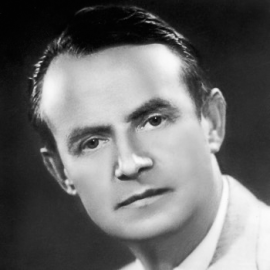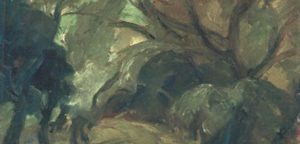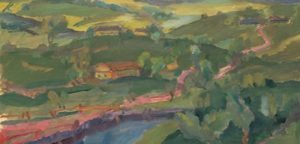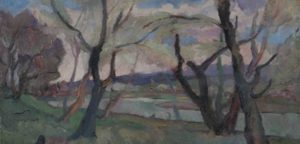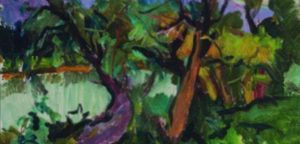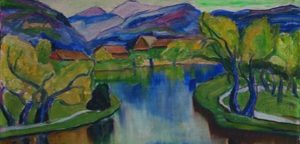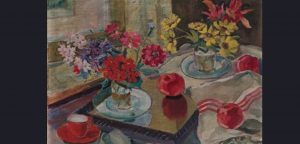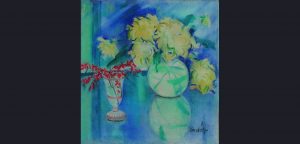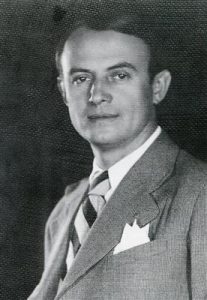Adalbert Erdeli was born on the 25th of May in 1891 in the village of Kelemenfolvo, Austria-Hungary, now Klimovitsa village Irshavsky district of Transcarpathian region, Ukraine.
1891 - 1955
Adalbert Erdeli
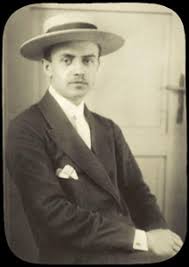
description
Adalbert Mikhailovich Erdeli was a Ukrainian painter and graphic artist, writer, public figure, teacher.
Born into the family of village teacher Mikhail Gryts in the Austro-Hungarian village of Kelemenfolvo, now it is Klimovitsa in the Irshavsky district of the Transcarpathian region of Ukraine. He had to change his surname in 1901 as a subject of Hungary. Having discovered the talent of his son, his father took care of his education.
Adalbert Erdeli was not only one of the founders of the Transcarpathian art school, but also the coryphaeus of the Ukrainian art of the 20th century in general. He was the founder, member and organizer of the Transcarpathian Union of Artists of Ukraine and its first chairman, and also became the first director of the newly opened Uzhgorod Art and Industrial School, where he taught until 1952. In Uzhhorod, a double monument to A. Erdeli and I. Bokshayu, the founding artists of the Transcarpathian school, was created; the Uzhhorod College of Arts at the Transcarpathian Art Institute was named after Erdeli.
Key ideas:
– Picturesque works by Adalbert Mikhailovich Erdeli captivate the viewer with a soft stream of light and color, the festive optimism of colors or unusual expression. Portraits, landscapes and still lifes are the favourite genres of the master.
– He worked in different techniques – the direction and texture of the smear can be both body-dense and watercolor translucent. The message of visual motives – the desire to display a holistic and harmony-filled world – is also important. No wonder the word “harmony” sounds more than once in the literary texts and articles of the artist. This is his key to understanding nature, objects and people – the entire environment. Despite the fact that art experts sometimes emphasize the artist’s emotionality, sometimes attributing one or another work to Expressionism, Erdeli does not have extreme tension, as there is no clearly marked destruction on forms.
– The master achieved the fusion of the depicted objects and space, in which they are placed, subordinating everything to one rhythm. As a result, small and great complement each other, which leads to the harmony desired by the author.
– You can grasp the mystery of the compositional skill of Erdeli thanks to the workbooks and albums of the artist. It seems that the fluent movement of the hand – be it a drawing-sepia or graphite sketch – fix the idea, which is not hidden behind the emotion of the colorful palette.
– Cezanne’s laws for the construction of the canvas are observed in painting and are even more palpable in the graphics of Adalbert Mikhailovich. At the same time, the Ukrainian master fills these “constructions” with poetics, soft exquisite-chamber intonations, obviously inspired by the nature of Prykarpattya, which the artist depicted with great love.
1891
1911
1916
1922 - 1926
1926 - 1927
1929 - 1931
1931 - 1949
1947
1955
The birth of the artist
Entered The Hungarian University of Fine Arts of Budapest
Entered The Hungarian University of Fine Arts of Budapest. There he studied painting from I. Reves, K. Ferenci, B. Ivani-Grunwald until 1915.
Lived and worked in Mukachevo
Lived and worked in Mukachevo.
Improved his skills in Munich
Improved his skills in Munich; the exhibition of his works of 1923 (mostly portraits of famous Munich people) was held at the famous Glaspalast (Glass Palace); as an artist, he was present at the trial of the leaders of the “beer putsch” (1924), making sketches for the newspaper, including a portrait of A. Hitler.
Having moved to Uzhgorod
Having moved to Uzhgorod, he founded , together with I. Bokshay, a city art school.
Lived and worked in Prague, Rome and Paris
Lived and worked in Prague, Rome and Paris, where he met representatives of Post-impressionism (Nabis, Fauvists), participated in exhibitions with Derain, Bonnard, Dufy and Matisse (Brno, Uzhgorod, Prague and Paris).
Became a founding member of the Society of Fine Arts in Podkarpatye
Became a founding member of the Society of Fine Arts in Podkarpatye; headed the association of Transcarpathian artists during the Czechoslovak Republic, then in Horthy Hungary and from 1946 – in Transcarpathian regional organization of the National Union of Artists of Ukraine; taught drawing at the gymnasium of Mukachevo, at the teacher’s seminary, at the school of applied art in Uzhgorod.
Was dismissed from the position of director
Was dismissed from the position of director and declared “cosmopolitan, servile to the decaying culture of the capitalist West”.
The death
He passed away on the 19th of September in 1955 in Uzhgorod, Ukraine.
Adalbert Erdeli
On Artist
flow
Fauvism
Impressionism
Post-impressionism
friends
Iosif Bokshay
artists
Paul Cezanne
Andre Derain
Kes van Dongen
Karey Ferenci
Imre Reves
Pierre Bonnard
Raoul Dufy
Henri Matisse
By Artist
flow
Cubism
Expressionism
friends
Iosif Bokshay
artists
Andrei Kotska
Adalbert Boretsky
Ernest Kontratovich
Ivan Shutev
Zoltan Soltes
Vasily Burch
Vasily Gabda
Elizaveta Kremnitskaya
Ferenc Seman
Pavel Balla
Vladimir Mikita

